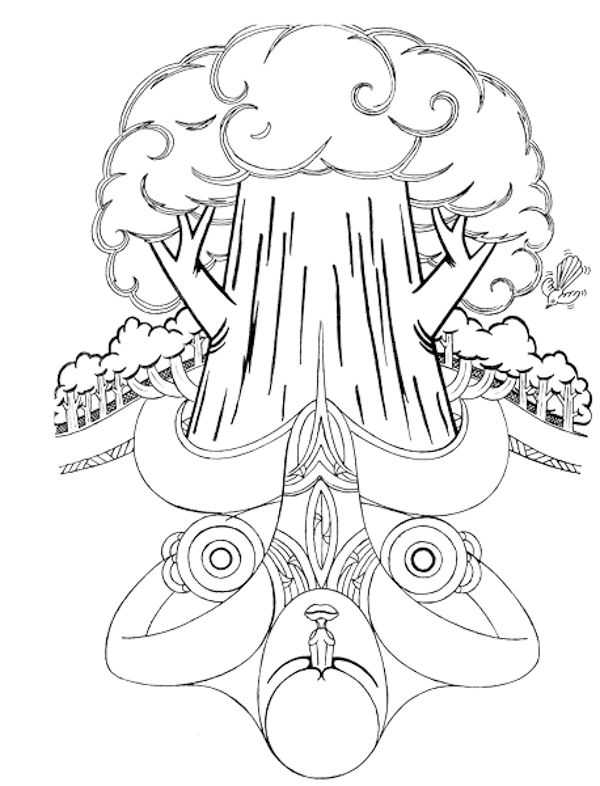
Tānemahuta, The forest and all the dwells in it.
Qualities of growth, strength, shelter, diversity of life
A terrarium covered in dark fabric at Te Mahia School houses some unusual school pets. If you look closely and observe the action beneath the soil, you might notice some tunnels. Tamariki will be quick to tell you about what inhabits this glass box, what they can do and where they will be released later in the year.

Students check the beetles housed in a terrarium in their classroom.
Te Mahia School on Māhia Peninsular in the Hawkes Bay has been actively involved in the Enviroschools Programme for a long time. Over the past few years the school has worked alongside their community to restore stream vegetation and the health of waterways in the Whangawehi Catchment. The Enviroschools kaupapa at Te Mahia School encompasses a range of projects including waste management, mara kai, making natural cleaners, learning about rongoā, pest control, wētā motels and growing native plants for a wetland in Opoutama.
Students have been planting on the edge of the Whangawehi River mouth since 2016. This is an annual event and they have already seen a change. Regular stream studies of the area ensure that all students are building an understanding of skills to monitor water quality and understanding of the link between the catchment planting and management to the water quality. The students are also actively involved in weed management of the planted area.

Planting site on the Whangawehi River mouth, 2016
More recently the school community has been involved in the release and monitoring of dung beetles as a biological means of removing animal faeces from the top of pasture, burying it and dispersing it more quickly. The beetles naturally “recycle” the dung into the soil system. This method of soil management has “flow on” effects for water quality as it breaks down the cow pats more efficiently, pulls the nutrients into the soil and aerates it. This means the faeces are less likely to be washed off the surface into the waterways. The introduced dung beetles differ from our native ones in that they are adapted to pasture habitat as opposed to native forest.
Because Te Mahia School had already been involved in action around the waterways the researchers saw an opportunity to involve the students. It is hoped that this engagement will empower them as future scientists and land managers so that they are able to carry the work into the future.
Tamariki from the school helped in the release of different dung beetle species (the life cycles differ and species are active during different seasons). The children made “dung burgers” to help create a good release site for the beetles. The recipe consisted of a flat pile of fresh juicy dung, a hundred (or so) hungry Copris incertus! Their “smoothie” is ready to enjoy!

Te Mahia students watch as the dung beetles are added to the dung burger.

Setting up a monitoring lure for the beetles.
“Students learnt how to set a trap to monitor the beetle progress the next month. The lure is 1kg of fresh dung. Part of the learning for the children”, explains Jenni Scothern-King, Hawkes Bay Enviroschools facilitator, “is to observe the beetles in action and start to understand the value and complexities of different invertebrates within our environment”.

Setting up the Bury it activity from the Enviroschools Zero Waste Theme Area resource.
Placing DIY tracking tunnels around the school to check for pests presence.
Te Mahia School teachers and students have already linked this learning with their compost systems (looking for spring-tails, centipedes, worms and slaters and carrying out the Bury it and Dig it Up activity (p 33 Zero Waste booklet) and the stream ecosystems (stream studies at Whangawehi Stream). This has been linked to their recent visit to Tokoroa Reef where they carried out Rocky Shore studies and learnt about the scientific classification system of shore life. There are more connections to this learning being made with the work with Predator Free NZ and their involvement with the annual Garden Bird Count. This is not a “stand-alone project” for this school community but seen as a rich weaving of the local environment and the curriculum.

One of the paua beetles is observed by a student. One of the students is observed by a beetle.
Each class had a chance to observe the largest of the released species, Onthophagus spiniger (paua beetles), crawling about. Because there was no dung in smelling range they were not about to fly away.
“It was like an ant crawling on my arm. I loved how shiny the back of the beetle was – it reminded me of a paua shell – I didn’t know then that this one is called a paua beetle! You should actually bring them to more schools ‘cos they might have more questions and like some information.” – Lenae
“It was scary to hold them – I gave mine to someone else… but then I got used to them. The male dung beetles get scared of the bigger dung beetles.” Thain
“It was a good experience seeing dung beetles and what different types there are. Getting to hold them was cool – they gave me pins and needles!” Tarquinn
“There are lots of beetles. I didn’t know there were so many kinds before.” – Hikairo
“It was interesting to learn about what the dung beetles do to help the environment and the landscape.” – Pippa
Through this integrated approach local students and their parents are becoming reconnected with their awa, their culture and traditional practices. These opportunities also create the link between students and professionals working in the management of the environment.

Learning about monitoring methods – pitfall traps at Te Mahia School.
Banner photo: Professor Emeritus, Henrik Moller supervises the dung burger preparation – quality and quantity control
